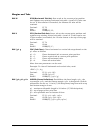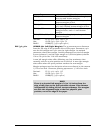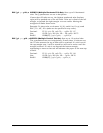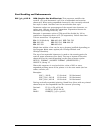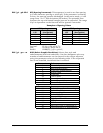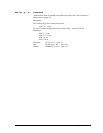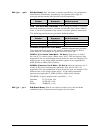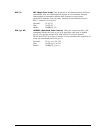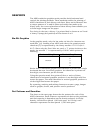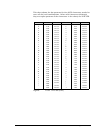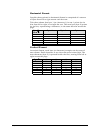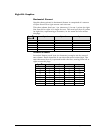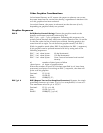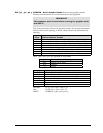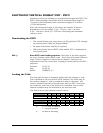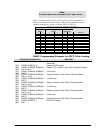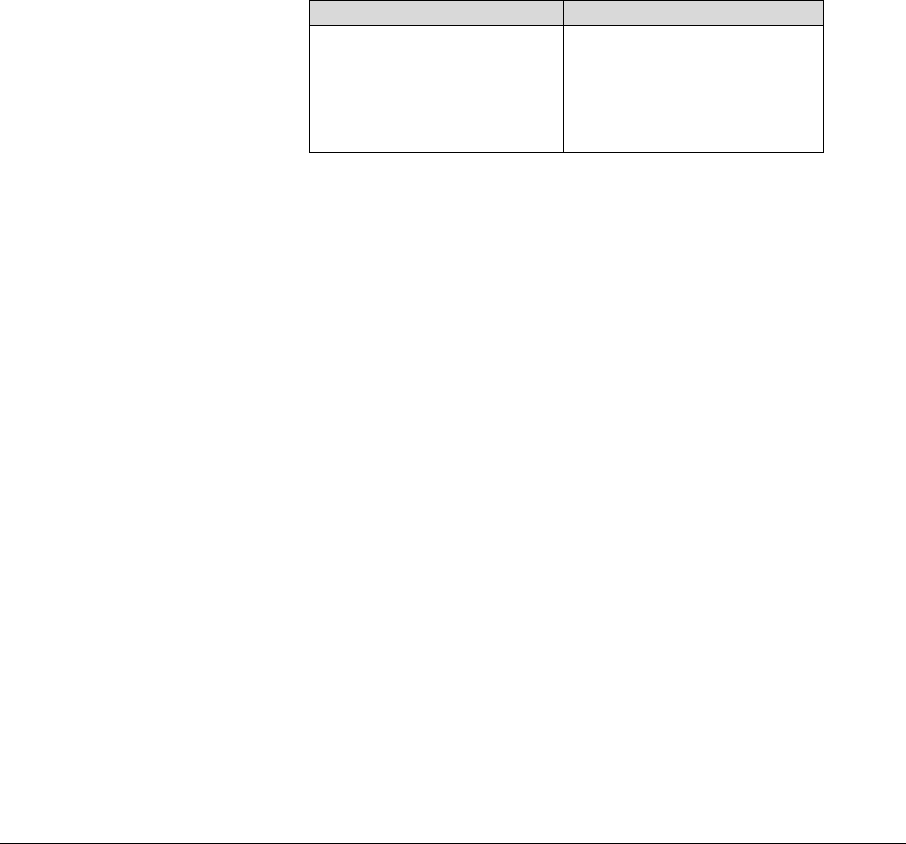
Chapter 2. ANSI Emulation GEK-00029B
36
GRAPHICS
The ANSI emulation graphics mode provides both horizontal and
vertical dot plotting methods. These methods enable the printing of
ASCII characters in their binary code form. Since each character has
a unique pattern of 1s and 0s (dots and voids) that make up its
binary code, the correct placement of these binary forms enables you
to form larger images on the paper.
For clarity in the text, a binary 1 (a printed dot) is shown as an X and
a binary 0 (empty dot position) will be shown as a 0.
Six-Bit Graphics
In the graphics mode, only the low order six bits of a character are
used (bits 1-6). Looking at an ASCII code chart, the question mark
character
(?)
is represented by the binary number 1111110 (bit 1 -
bit 7). Since only the first 6 bits are used. a "?" prints six dots on the
paper. An asterisk "*" is represented by 010101 which prints the
following:
Horizontal Graphics Vertical Graphics
0
X
0X0X0X 0
X
0
X
Notice that in horizontal graphics the character is printed on a single
horizontal dot row. In vertical graphics, the character is printed six
dots high, one character per dot column.
Using the question mark that prints all dots, a series of these
characters in horizontal graphics produces a one-dot-high solid line
across the paper. The same character in vertical graphics produces a
six-dot high band across the paper.
By repeating, omitting and mixing characters across a page, images
such as graphs, charts, and pictures can be produced.
Dot Patterns and Densities
The chart on the next page shows the dot patterns for each of the
ASCII characters. Each character represents six dots or dot positions,
and their spacing is dependent on the density selected. At 60 dpi
density, the dots are spaced 1/60 inch apart. At 120 dpi, each
character represents six dots spaced 1/120 inch apart.



